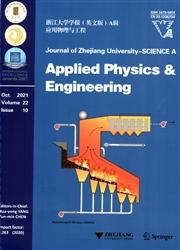Inkjet 3D bioprinting for tissue engineering and pharmaceutics
IF 3.9
3区 工程技术
Q1 ENGINEERING, MULTIDISCIPLINARY
引用次数: 2
Abstract
3D bioprinting has the capability to create 3D cellular constructs with the desired shape using a layer-by-layer approach. Inkjet 3D bioprinting, as a key component of 3D bioprinting, relies on the deposition of cell-laden droplets to create native-like tissues/organs which are envisioned to be transplantable into human body for replacing damaged ones. Benefiting from its superiorities such as high printing resolution and deposition accuracy, inkjet 3D bioprinting has been widely applied to various areas, including, but not limited to, tissue engineering and drug screening in pharmaceutics. Even though inkjet 3D bioprinting has proved its feasibility and versatility in various fields, the current applications of inkjet 3D bioprinting are still limited by the printing technique and material selection. This review, which specifically focuses on inkjet 3D bioprinting, firstly summarizes the techniques, materials, and applications of inkjet 3D bioprinting in tissue engineering and drug screening, subsequently discusses the major challenges that inkjet 3D bioprinting is facing, and lastly summarizes potential solutions to those challenges.用于组织工程和制药的喷墨3D生物打印
3D生物打印具有使用逐层方法创建具有所需形状的3D细胞结构的能力。喷墨生物3D打印技术是生物3D打印技术的重要组成部分,它依赖于细胞滴滴的沉积来制造类似于天然的组织/器官,这些组织/器官有望移植到人体中,以替代受损的组织/器官。喷墨生物3D打印凭借其高打印分辨率和沉积精度等优势,已广泛应用于包括但不限于组织工程和药物筛选等各个领域。尽管喷墨生物3D打印已经在各个领域证明了其可行性和通用性,但目前喷墨生物3D打印的应用仍然受到打印技术和材料选择的限制。本文以喷墨生物3D打印为重点,首先综述了喷墨生物3D打印技术、材料及其在组织工程和药物筛选中的应用,然后讨论了喷墨生物3D打印面临的主要挑战,最后总结了这些挑战的潜在解决方案。
本文章由计算机程序翻译,如有差异,请以英文原文为准。
求助全文
约1分钟内获得全文
求助全文
来源期刊

Journal of Zhejiang University-SCIENCE A
工程技术-工程:综合
CiteScore
5.60
自引率
12.50%
发文量
2964
审稿时长
2.9 months
期刊介绍:
Journal of Zhejiang University SCIENCE A covers research in Applied Physics, Mechanical and Civil Engineering, Environmental Science and Energy, Materials Science and Chemical Engineering, etc.
 求助内容:
求助内容: 应助结果提醒方式:
应助结果提醒方式:


